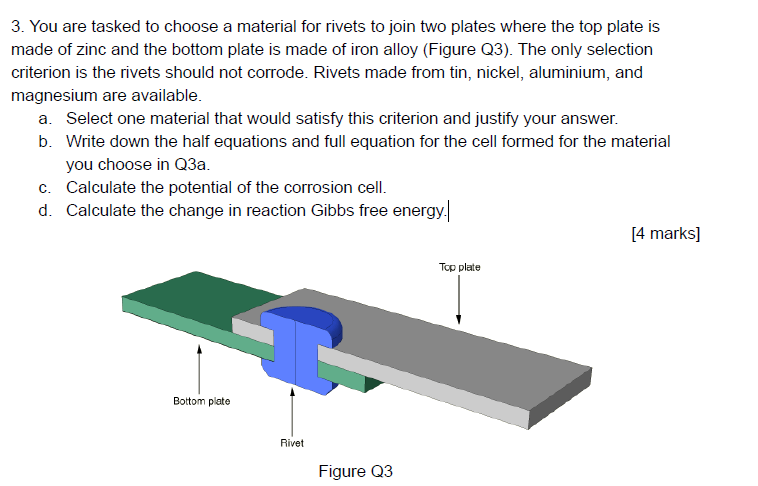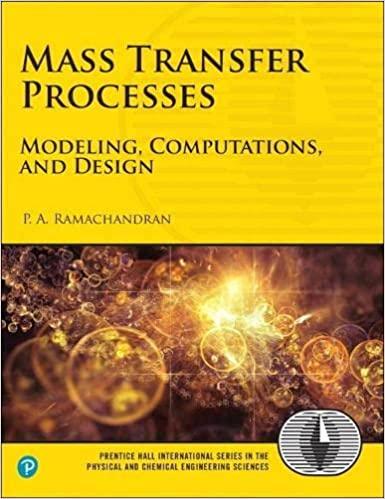Question
You are tasked to choose a material for rivets to join two plates where the top plate is made of zinc and the bottom plate
You are tasked to choose a material for rivets to join two plates where the top plate is made of zinc and the bottom plate is made of iron alloy (Figure Q3). The only selection criterion is the rivets should not corrode. Rivets made from tin, nickel, aluminium, and magnesium are available. a. Select one material that would satisfy this criterion and justify your answer. b. Write down the half equations and full equation for the cell formed for the material you choose in Q3a. c. Calculate the potential of the corrosion cell. d. Calculate the change in reaction Gibbs free energy.
Step by Step Solution
There are 3 Steps involved in it
Step: 1

Get Instant Access to Expert-Tailored Solutions
See step-by-step solutions with expert insights and AI powered tools for academic success
Step: 2

Step: 3

Ace Your Homework with AI
Get the answers you need in no time with our AI-driven, step-by-step assistance
Get Started


